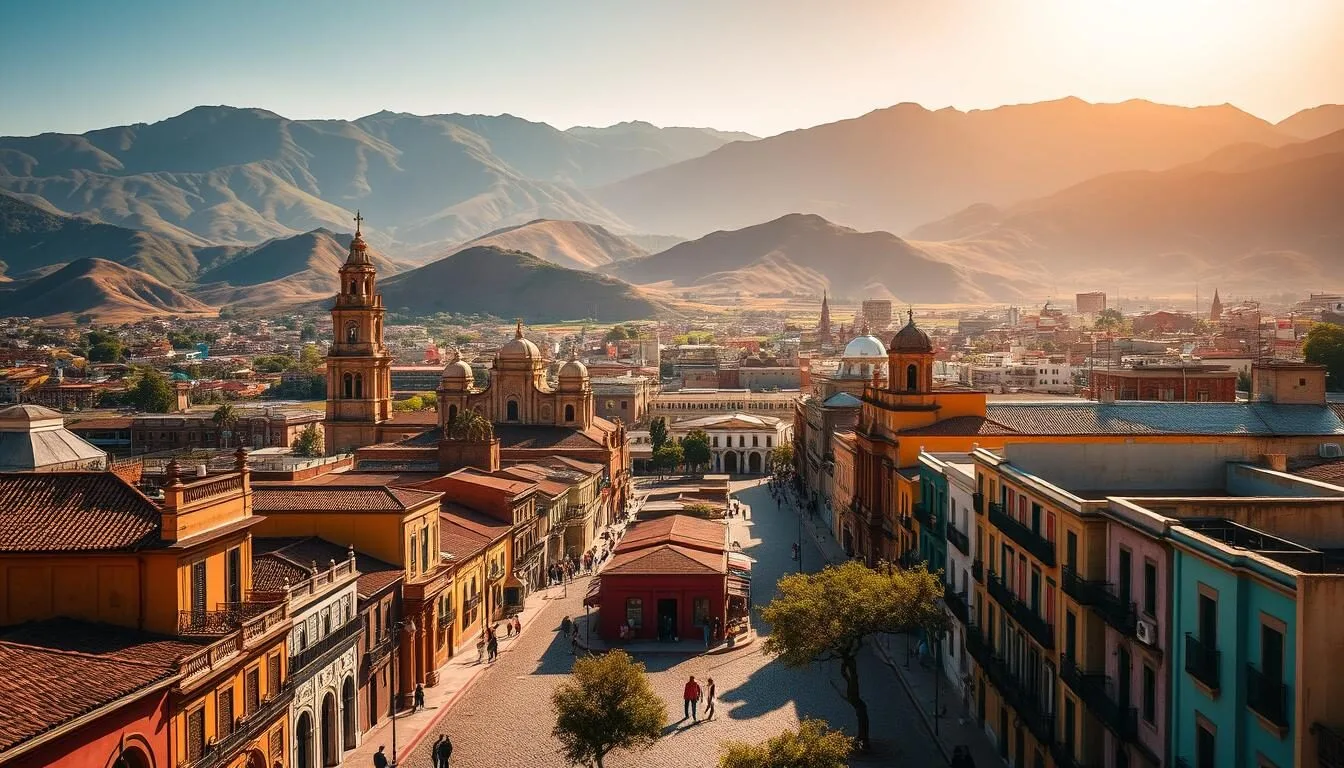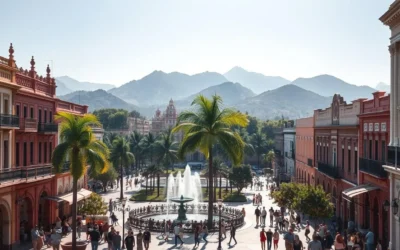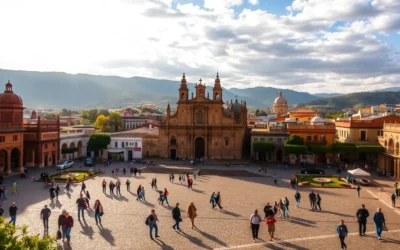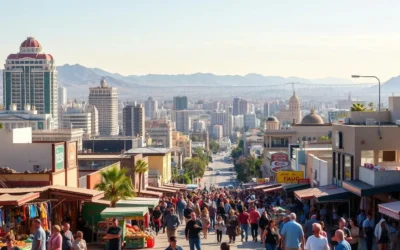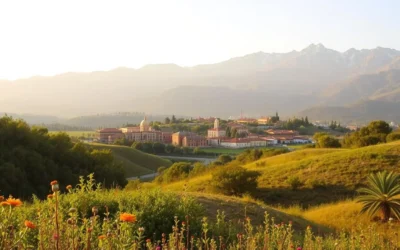You’ve probably heard of Mexico’s rich cultural heritage, but have you considered visiting Queretaro, a colonial city that’s a treasure trove of history and natural beauty? With its historic center designated as a UNESCO World Heritage Site, this city boasts an impressive collection of over 1,400 monuments dating back to the 1700s.
As you explore this charming city, you’ll be struck by its unique blend of Spanish and indigenous influences, reflected in its architecture, culture, and cuisine. With its pleasant climate, thanks to its mile-high elevation, Queretaro is an ideal travel destination year-round. Whether you’re interested in history, culture, or outdoor activities, this city has something for everyone.
Discovering Queretaro: Mexico’s Hidden Colonial Gem
Tucked away in central Mexico, Querétaro is a colonial gem waiting to be discovered. You can explore the city’s historic center on foot, enjoying the vibrant colors, quirky door knockers, and cultural events in the jardines (squares). With its rich history and authentic Mexican experience, Querétaro is an ideal destination for travelers.
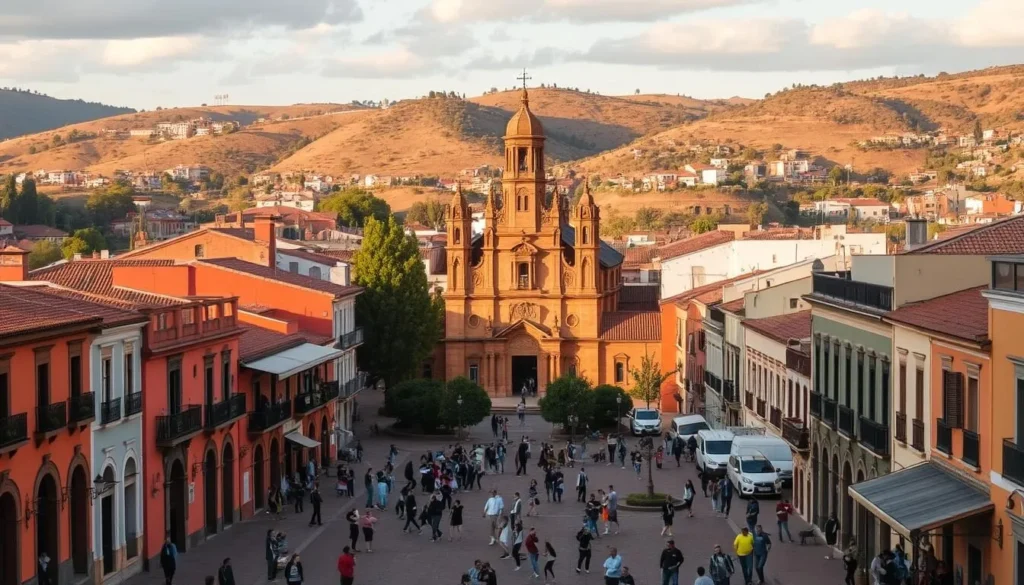
Why Queretaro Should Be on Your Mexico Itinerary
Querétaro remains somewhat under the radar compared to nearby San Miguel de Allende and Guanajuato, making it an authentic Mexican experience without overwhelming tourism. The city’s strategic location in central Mexico makes it easily accessible, just 3 hours from Mexico City by bus or a short flight to Querétaro’s well-connected airport. You can plan your trip according to the best time to visit, with the dry season from October to March offering pleasant temperatures.
One of the main advantages of visiting Querétaro is its ability to provide a genuine Mexican experience. You can enjoy the city’s historic center, visit nearby towns, and explore the surrounding attractions without feeling rushed. A stay of 3-5 days is ideal to fully experience the city and its surroundings.
Getting to Queretaro and Getting Around
To travel to Querétaro, you can fly into Querétaro’s well-connected airport or take a bus from Mexico City. Once you arrive, getting around the city is relatively easy. The historic center is walkable, and you can also use ride-sharing apps like DiDi and Uber or the local bus system to get around. If you’re looking for a more structured experience, consider joining a guided tour, such as the popular Classic Model T tour through the historic center, to gain historical context and insights into the city’s landmarks.
With its convenient location and various transportation options, you can make the most of your time in Querétaro and enjoy the best things to do in this beautiful place.
Exploring Queretaro’s UNESCO Historic Center
As you step into Queretaro’s historic center, you’ll be transported to a world of colonial charm and architectural splendor. This UNESCO World Heritage Site is a must-visit destination, offering a unique blend of history, culture, and natural beauty.
Walking the Pedestrian Streets and Andadores
One of the joys of exploring Queretaro’s historic center is walking its pedestrian-only streets, known as andadores. You’ll stroll along Andador Libertad, Andador Matamoros, and Calle Cinco de Mayo, taking in the sights and sounds of the city. These charming streets are lined with cafes, restaurants, and shops, making them perfect for people-watching and soaking up the local atmosphere.
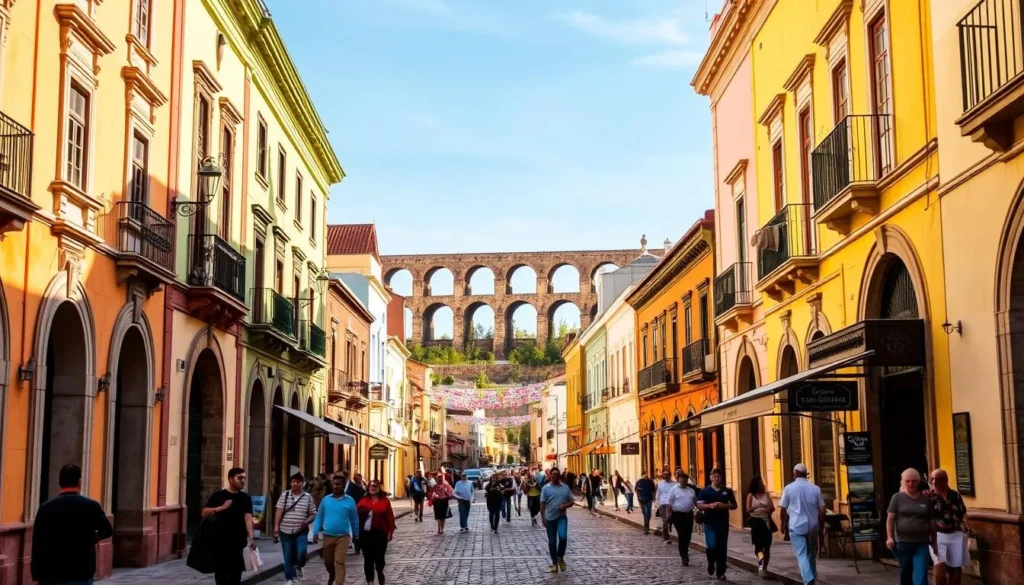
Plaza de Armas and Jardín Zenea
At the heart of Queretaro’s historic center lies Plaza de Armas, a vibrant square surrounded by topiaries, gardens, and historic buildings. You’ll often find traditional danzón dancing here, adding to the square’s lively atmosphere. Be sure to visit La Fuente de Los Perritos (The Fountain of the Doggies), a charming fountain from 1843. Nearby, Jardín Zenea offers a serene escape, featuring a historic fountain with the goddess Hebe surrounded by swans.
Admiring the Colonial Architecture
Queretaro’s historic center is renowned for its stunning colonial architecture, characterized by the use of pink cantera stone. As you walk through the streets, you’ll admire the intricate details and ornate facades of the buildings, many of which date back to the 18th century. The city’s unique blend of Spanish and indigenous influences is reflected in its architecture, making it a fascinating place to explore.
| Landmark | Description | Location |
|---|---|---|
| Plaza de Armas | Vibrant square with gardens and historic buildings | Heart of the historic center |
| Jardín Zenea | Serene garden square with historic fountain | Near Plaza de Armas |
| Andador Libertad | Pedestrian street lined with cafes and shops | Historic center |
Must-See Monuments and Fountains in Queretaro
As you wander through Queretaro’s historic center, you’ll discover a plethora of monuments and fountains that showcase the city’s rich cultural heritage. The streets are lined with historical landmarks that not only add to the city’s aesthetic appeal but also tell the story of its past. Queretaro is often referred to as an “outdoor museum” due to its numerous monuments and historical sites.
El Danzante Conchero Statue
One of the must-see monuments in Queretaro is the El Danzante Conchero statue, a bronze sculpture created by Juan Velasco Perdomo. This statue represents the traditional Conchero dancers you might see performing during local festivities, dressed in their vibrant traditional costumes. The statue is a symbol of the city’s cultural heritage and a testament to the importance of preserving traditional practices.
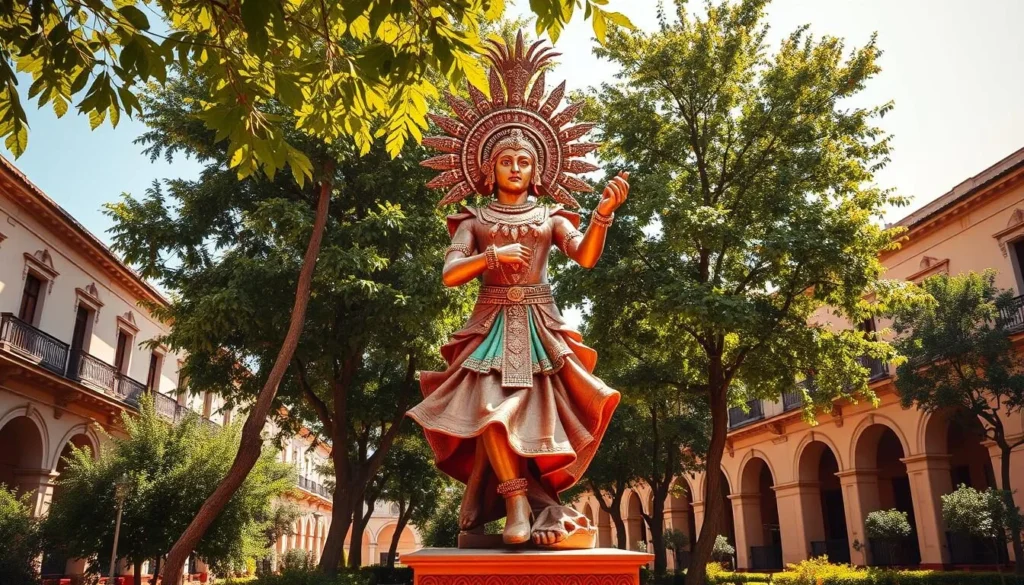
Fuente de Neptuno (Neptune Fountain)
Another impressive landmark is the Fuente de Neptuno, or Neptune Fountain, designed by Francisco Tresguerras in 1797. This stunning fountain features Neptune riding a water-spitting fish under a stone arch, showcasing the city’s architectural prowess. The fountain is not only a beautiful sight but also a significant historical artifact, highlighting the importance of water in the city’s design.
Fuente de los Perritos (Fountain of the Doggies)
In the heart of Plaza de Armas, you’ll find the charming Fuente de los Perritos, a cute fountain from 1843 dedicated to the Marqués de la Villa del Villar del Aguila. This fountain is a delightful addition to the plaza, adding to the area’s charm and character. It’s a great spot to relax and enjoy the surroundings.
Monument to La Corregidora
The Monument to La Corregidora is a significant historical landmark dedicated to Josefa Ortíz de Domínguez, a heroine of Mexico’s independence movement. Designed by Carlos Noriega, this 1910 monument commemorates her contributions to the country’s fight for independence. It’s a powerful reminder of the important role she played in shaping Mexico’s history.
| Monument/Fountain | Description | Year |
|---|---|---|
| El Danzante Conchero Statue | Bronze sculpture representing traditional Conchero dancers | – |
| Fuente de Neptuno | Fountain featuring Neptune riding a water-spitting fish | 1797 |
| Fuente de los Perritos | Fountain dedicated to the Marqués de la Villa del Villar del Aguila | 1843 |
| Monument to La Corregidora | Monument dedicated to Josefa Ortíz de Domínguez | 1910 |
Queretaro’s Magnificent Churches and Religious Sites
The city of Queretaro is home to numerous breathtaking churches and religious sites, each with its own unique story and architectural style. These sites not only showcase the city’s rich cultural heritage but also highlight its significance in Mexico’s history.
Templo de Santa Rosa de Viterbo
One of the most visually striking churches in Queretaro is the Templo de Santa Rosa de Viterbo, an 18th-century baroque church considered one of the most elaborate religious buildings in the city. As you step inside, you’ll be greeted by the stunning ornate decor and intricate details that adorn the church. The Templo de Santa Rosa de Viterbo is a must-visit attraction when exploring Queretaro’s historic center.
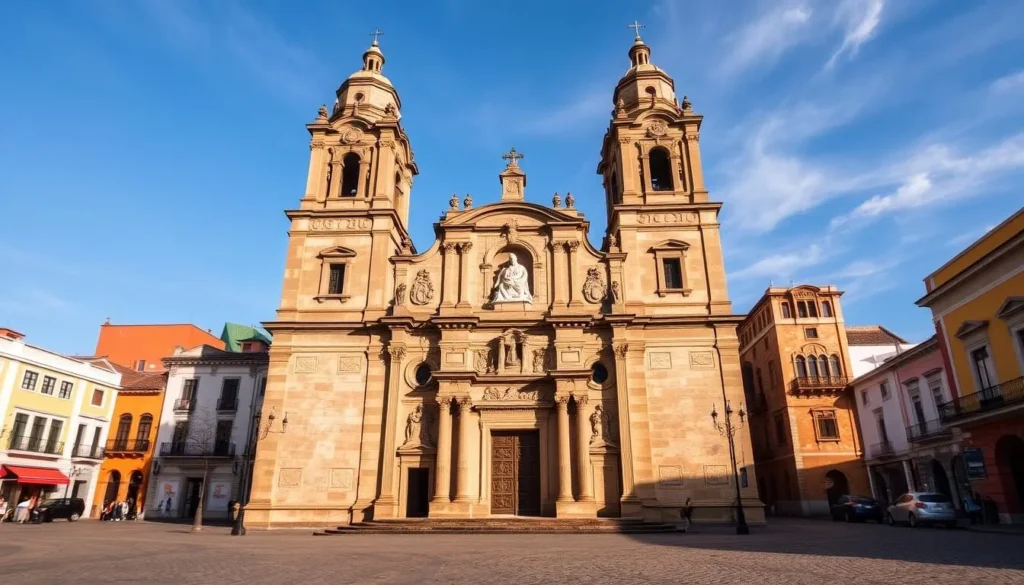
Templo de Santa Clara
Another significant religious site is the Templo de Santa Clara, known for its stunning interior that’s almost “dripping with gold” from floor to ceiling. The baroque-style altars feature over-the-top ornamentation in carved wood and gold, making it a breathtaking sight. The church’s history dates back to 1607 when the first stone was laid, and it was completed in 1633 by Francisco de Chavira. The current structure, designed by architect José de Rayas Delgado, was built in 1662.
| Church Name | Year Built | Architectural Style |
|---|---|---|
| Templo de Santa Rosa de Viterbo | 18th century | Baroque |
| Templo de Santa Clara | 1662 | Late Renaissance/Baroque |
| Templo y Ex-Convento de la Santa Cruz | 1531 (historical significance) | Colonial |
Templo y Ex-Convento de la Santa Cruz
The Templo y Ex-Convento de la Santa Cruz holds significant historical importance as it’s built on San Gremal Hill, where the Spaniards sealed the conquest of Queretaro in 1531. According to legend, the Otomí indigenous warriors saw a cross in the sky during the battle, leading to their surrender. The site is also home to the legendary “Arbol de la Cruz” (Tree of the Cross), said to have sprouted from a cane belonging to a devoted evangelizer.
Queretaro’s churches and religious sites played crucial roles in the city’s history, from the Spanish conquest to the execution of Emperor Maximilian. The architectural styles ranging from Renaissance to Baroque and Neoclassical showcase the evolution of religious architecture in colonial Mexico. As you explore these sites, you’ll gain a deeper understanding of Queretaro’s rich cultural and spiritual heritage.
Los Arcos: Queretaro’s Iconic Aqueduct
The Los Arcos aqueduct stands as a proud symbol of Queretaro, reflecting the city’s historical depth and architectural splendor. This magnificent structure, built between 1726 and 1735, was commissioned by the Marquis de la Villa del Villar del Aguila in response to the Capuchin nuns’ pleas for a reliable source of clean water for the city.
Aqueduct History
The history of Los Arcos is deeply intertwined with the city’s need for a sustainable water supply. The aqueduct, an International Historic Civil Engineering Landmark, carried water from La Cañada Springs to the city, distributing it through “cajas de agua” or fountains, some of which still remain today. This impressive hydraulic system, comprising 74 stone arches stretching over a kilometer and reaching 23 meters at its highest point, is one of the longest aqueducts in Mexico.
![]()
Best Viewpoints
For the best views of this magnificent structure, visit Mirador Los Arcos. This viewpoint offers a stunning perspective on the aqueduct, especially beautiful at night when the arches are illuminated. From here, you can marvel at the last section of the 74 stone arches, a true testament to the engineering skills of the 18th century.
As you visit Mirador Los Arcos, you’ll appreciate the engineering feat that this structure represents. The aqueduct not only symbolizes Queretaro’s rich history but also stands as a reminder of the city’s commitment to preserving its cultural heritage.
- Discover the fascinating history behind Queretaro’s iconic Los Arcos aqueduct.
- Learn about the role of the Capuchin nuns and the Marquis de la Villa del Villar del Aguila in its construction.
- Visit Mirador Los Arcos for breathtaking views of the aqueduct, particularly at night.
- Understand the significance of Los Arcos as an International Historic Civil Engineering Landmark.
Queretaro, Mexico: Best Things to Do for History Buffs
Queretaro, Mexico, is a treasure trove for history buffs, offering a plethora of historical sites and landmarks that showcase the country’s rich past. As you explore this colonial gem, you’ll uncover the significant role it played in shaping Mexico’s history.
La Casa de La Corregidora
La Casa de La Corregidora is a historic house that served as the venue for secret meetings in 1810, aimed at supporting Mexico’s independence from Spain. Josefa Ortíz de Domínguez, known as “La Corregidora,” was instrumental in warning the rebels when their conspiracy was discovered, marking the beginning of the War of Independence.
Today, this house is a government building that houses the office of the Governor of the State. You can take a guided tour to learn more about its history and admire the murals inside.
You can visit La Casa de La Corregidora to experience the history firsthand. Here, you can:
- Explore the rooms where Josefa Ortíz de Domínguez hosted secret meetings disguised as a book club.
- Learn about the brave actions of “La Corregidora” and her role in Mexico’s struggle for independence.
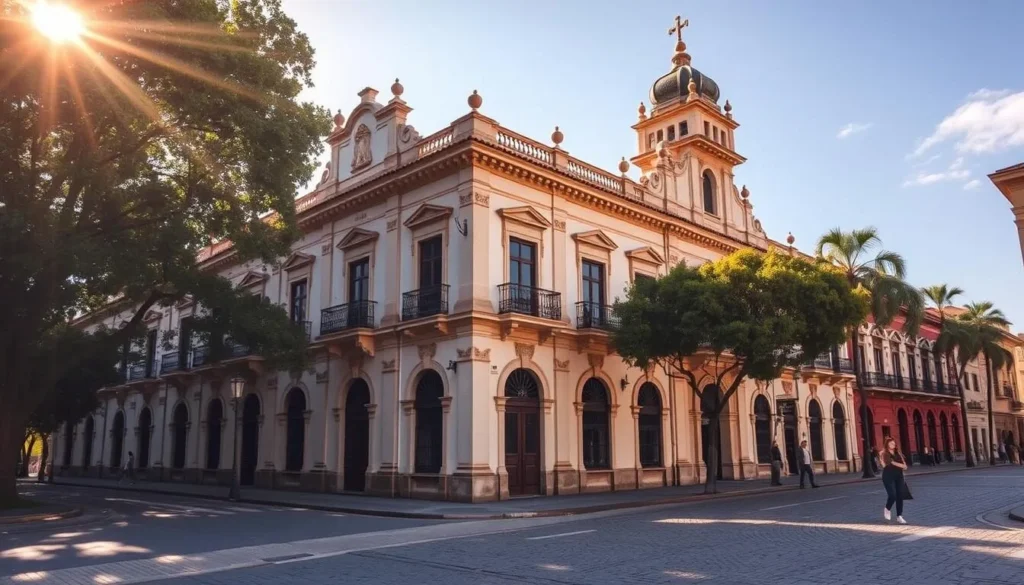
Teatro de la República
Teatro de la República is another significant historical site in Queretaro, completed in 1852. This theater has witnessed pivotal moments in Mexico’s history, including the signing of the Mexican Constitution, the sentencing of Emperor Maximilian to death, and the first performance of the Mexican National Anthem.
Visiting this theater provides a tangible connection to the events that shaped modern Mexico.
At Teatro de la República, you can:
- Explore the historic theater where key events in Mexico’s history took place.
- Understand the significance of Queretaro in the country’s history, from the independence movement to the fall of the Second Mexican Empire.
By visiting these historical sites, you’ll gain a deeper understanding of Queretaro’s pivotal role in Mexican history and appreciate the city’s rich cultural heritage.
Museum-Hopping in Queretaro
As you wander through Queretaro’s historic center, you’ll discover a plethora of museums that showcase the city’s rich cultural heritage. Queretaro is renowned for having one of the highest densities of museums in Mexico, with nearly 20 museums packed into its historic center. This makes it an ideal destination for those who appreciate history, art, and culture.
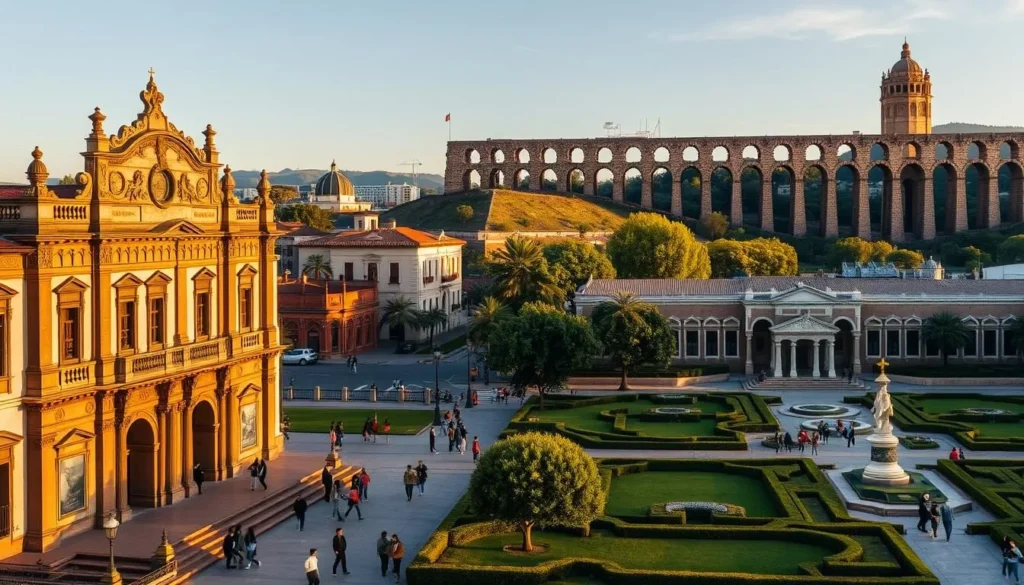
Querétaro Regional Museum
The Querétaro Regional Museum is housed in a former convent that played a significant role in the city’s religious and cultural life from the 16th century until the mid-19th century. Here, you’ll learn about the history of the region and the country through archeological findings and artifacts ranging from pottery and paintings to traditional garments and furniture. The exhibit takes you on a journey from the pre-Columbian era through the colonial period to modern Mexico, giving you a comprehensive understanding of Queretaro’s role in Mexico’s history.
You’ll find a diverse range of artifacts, including arts and crafts, and photography, making this museum a must-visit for history enthusiasts. The building itself is as interesting as the exhibits, featuring fountains, ornate ceilings, and beautiful arches.
Querétaro Museum of Art
Located in what many consider the most beautiful cloister in the city, possibly in all of Mexico, the Querétaro Museum of Art is a treat for art lovers. The museum features contemporary sculptures and incredible wooden carvings from the 18th century, showcasing the region’s rich artistic heritage. The building’s architecture is equally impressive, making it a great place to spend an afternoon appreciating the best things that Queretaro has to offer in terms of art.
Calendar Museum (MUCAL)
The Calendar Museum, or MUCAL, is a surprisingly fascinating museum that explores the concept of time. The exhibits range from intricate ancient Aztec time-keeping devices to vintage calendars, providing a unique perspective on how our understanding of time has evolved. Visitors can gain a deeper appreciation for the complexity and importance of timekeeping in human history.
In addition to these museums, Queretaro is home to other unique cultural institutions, such as the Museum of the City, which features contemporary art in a baroque mansion, and Museo de la Casa Zacatecana, which displays 19th-century mansion life. Many of these museums are housed in historic buildings that are as impressive as the collections they contain, offering a two-for-one cultural experience.
Cerro de las Campanas National Park
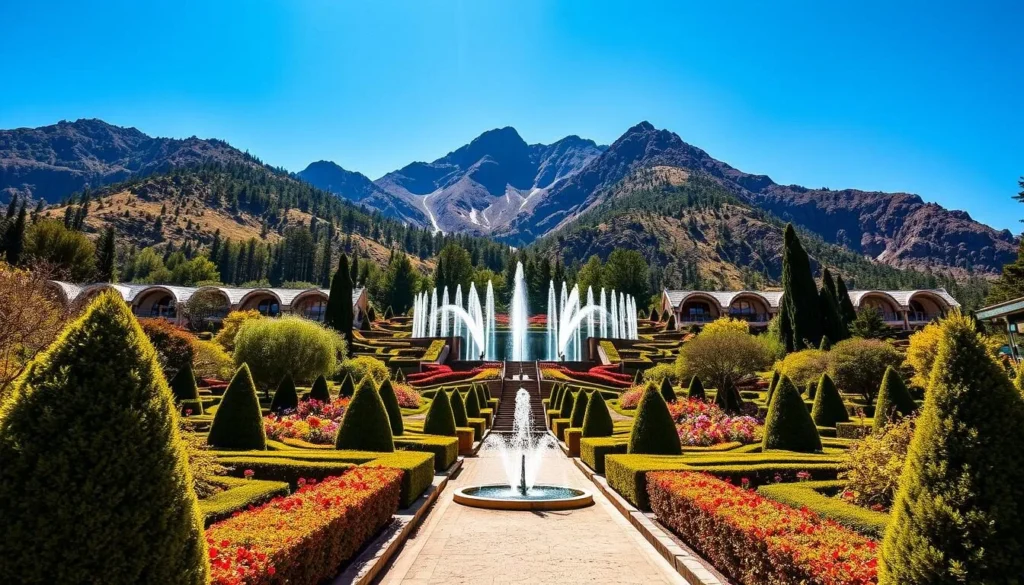
As you step into Cerro de las Campanas National Park, you’re walking into a pivotal moment in Mexico’s past. This site is not just a collection of beautiful gardens and fountains; it’s a place where history was made. The hill got its name because certain stones found here produce bell-like sounds when struck together.
The Execution of Emperor Maximilian
The park is famously known for being the site where Emperor Maximilian of Habsburg was executed by firing squad in 1867. This event marked the end of the Second Mexican Empire and the triumph of the Republic under President Benito Juarez. The complex political dynamics that led to Maximilian’s rise and fall are a fascinating chapter in Mexican history.
The Chapel and Museum
Within the park, you’ll find the Capilla de La Piedad (Chapel of Mercy), commissioned by the Austrian government in 1900 to mark the site of Maximilian’s execution. The on-site museum provides a detailed account of this pivotal moment in Mexican history, offering insights into the French Intervention and the political climate of the time.
Visiting Cerro de las Campanas National Park offers a unique opportunity to learn about Mexico’s history, understand the significance of the French Intervention, and appreciate the beautiful surroundings. It’s a place where history comes alive, making it a must-visit destination for anyone interested in the rich heritage of Queretaro and Mexico as a whole.
Ancient Pyramids: El Cerrito Archaeological Zone
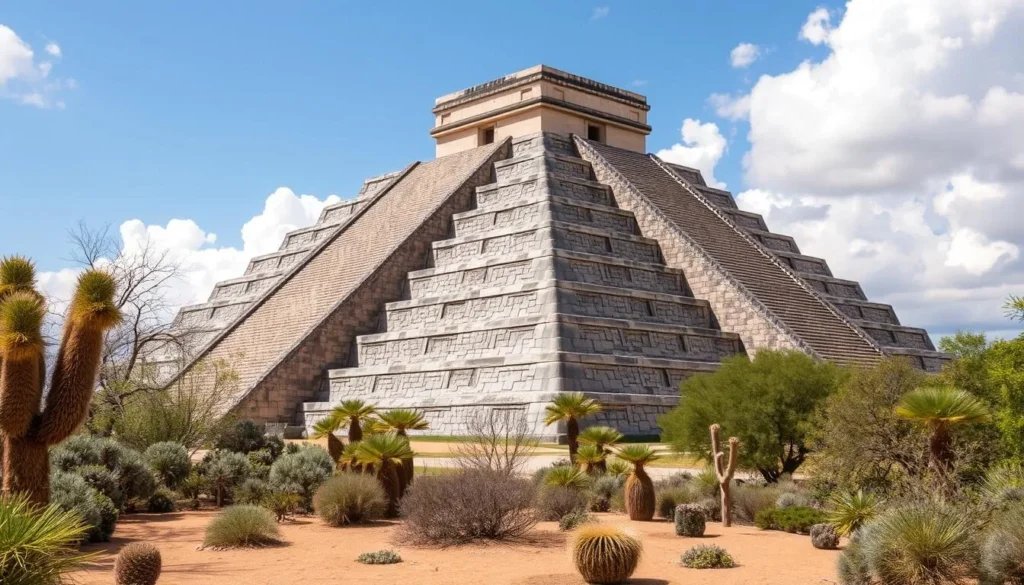
Discover the ancient pyramid of El Cerrito, a hidden gem in Queretaro’s suburbs. This impressive archaeological site is home to a partially excavated Toltec pyramid that dates back to around 700-900 AD. The pyramid was used as a place of worship among Mesoamerican civilizations for over a millennium, making it a significant site in the region’s history.
History of the Toltec Pyramid
The Toltec pyramid at El Cerrito is considered one of the most important sites of the Toltec world. Rising nearly 10 stories high (30 meters), this rugged structure is a remarkable sight. As you explore the site, you’ll gain insight into the pre-Hispanic cultures that inhabited the region long before the Spanish arrived.
Visiting the Site and Museum
When you visit El Cerrito Archaeological Zone, you’ll not only see the pyramid but also appreciate the well-manicured desert garden landscaping that surrounds the ruins. The recently renovated on-site museum provides a wealth of information about the history and significance of this archaeological treasure. Planning your visit is easy, as the site is just a 20-minute drive from Queretaro’s historic center, making it an ideal day trip.
Key Highlights of El Cerrito Archaeological Zone:
- Discover El Cerrito Archaeological Zone, an ancient pyramid dating back to 700-900 AD.
- Marvel at the partially excavated Toltec pyramid, nearly 10 stories high.
- Learn about the history and significance through exhibits at the on-site museum.
- Appreciate the desert garden landscaping surrounding the ruins.
- Plan your visit for an easy half-day trip from Queretaro’s historic center.
Wine and Cheese Route of Queretaro
The state of Queretaro boasts Mexico’s second-largest wine region, making it a must-visit for wine enthusiasts. Despite being outside the traditional wine-producing parallels, Queretaro’s semi-desert highlands create favorable conditions for grape growing.

Finca Sala Vivé by Freixenet
One of the most popular wineries in the region is Finca Sala Vivé by Freixenet México. Established by the well-known Spanish wine producer in the late 1970s, Freixenet México now produces 2 million bottles annually. The majority of its sales are sparkling wines, produced using the same methods employed in Champagne production.
Visitors can explore Finca Sala Vivé and learn about the wine-making process, as well as sample some of the delicious wines. The winery is a great example of how Queretaro’s wine industry has grown, with over 25 vineyards in the region now producing high-quality wines.
Other Notable Wineries and Cheese Producers
In addition to Finca Sala Vivé, there are many other notable wineries and cheese producers in Queretaro that are worth visiting. The dedicated Wine and Cheese Route (Ruta de Vino y Queso) takes you through vineyards and cheese-producing farms surrounding the city, offering a complete gastronomic experience.
You can consider taking a guided tour that combines winery visits with stops at cheese producers and nearby magical towns. This will give you a deeper understanding of the region’s wine and cheese production, as well as its rich cultural heritage.
Craft Beer Scene in Queretaro
As you explore Queretaro, you’ll find a thriving craft beer culture that’s worth experiencing. While Queretaro is renowned for its vineyards, the local craft beer scene has a strong presence throughout the city, offering a different kind of tasting experience.
The city’s craft beer enthusiasts can enjoy various breweries and taprooms scattered around Queretaro Centro. Visiting these breweries and sampling local cervezas is a fun activity to do in Queretaro. For instance, Brewer Gastropub offers six tasty taps, with three being their own brews, priced between $65-$75 pesos per beer, accompanied by a nice food menu.
Cerveza Hércules Beer Garden
Cerveza Hércules is a standout in Queretaro’s craft beer scene. Their brewery and beer garden, located in a former textile factory, is one of the coolest places in the city. Here, you can enjoy excellent craft beers like República and Ráfaga. If you’re a beer enthusiast, it’s worth making the extra effort to visit their brewery.
Downtown Brewpubs and Taprooms
In addition to Cerveza Hércules, downtown Queretaro is home to other notable brewpubs and taprooms. Tap Room27, a new brewpub, offers their own beer on a promotion of two-for-$130 pesos at their cozy corner bar. You can also check out Almacén Hércules in the city center, which hosts local events like artisan markets.
| Brewery/Taproom | Notable Beers | Price Range (Pesos) |
|---|---|---|
| Brewer Gastropub | House Brews | 65-75 |
| Tap Room27 | Own Beer | 130 (2-for-1 promo) |
| Cerveza Hércules | República, Ráfaga | Varies |
Queretaro’s craft beer culture has taken root in this traditionally wine-focused region, providing visitors with diverse drinking options. Beer enthusiasts consider Queretaro’s craft beer scene to be one of the most impressive in central Mexico, with quality brews rivaling those found in Mexico City.
Local Cuisine and Food Experiences
Queretaro’s culinary scene is a reflection of its rich cultural heritage, offering a diverse range of local cuisine and food experiences. You’ll find that the city’s food is a perfect blend of traditional and modern flavors.
Enchiladas Queretanas and Regional Specialties
One of the best things to do in Queretaro is to indulge in its local specialties, such as Enchiladas Queretanas. This signature dish features chicken, potatoes, and carrots served with salsa verde and topped with cream. You’ll also find other regional specialties that showcase the city’s gastronomic identity.
- Sample Enchiladas Queretanas, a dish that embodies the city’s culinary spirit.
- Discover local wine and cheese pairings that are perfect for a light meal or afternoon snack.
- Experience the rich flavors of Queretaro’s regional cuisine at popular restaurants like Chucho El Roto.
| Regional Specialty | Description |
|---|---|
| Enchiladas Queretanas | Chicken, potatoes, and carrots in salsa verde, topped with cream. |
| Local Wine and Cheese | Pairings that showcase the region’s gastronomic specialties. |
Mercado La Cruz Food Stalls
Visiting Mercado La Cruz is one of the best things to do in Queretaro. The market is a sensory delight, with colorful piñatas hanging from the rafters, the whir of blenders mixing fresh juices, and the delicious smells wafting from the food vendors. You’ll find a variety of food stalls, including Gorditas El Güero y Lupita, which serves authentic regional dishes.
- Join locals at popular food stalls like Gorditas El Güero y Lupita for authentic regional dishes.
- Try fresh juices from market vendors, such as the “depresión” from La Güera made with beet, apple, spinach, and carrot.
- Explore the market’s offerings, from traditional snacks to local handicrafts.
By exploring Queretaro’s local cuisine and food experiences, you’ll gain a deeper understanding of the city’s culture and traditions. Whether you’re sampling Enchiladas Queretanas or enjoying fresh juices at Mercado La Cruz, you’ll find that the city’s food scene is a true reflection of its people’s warmth and hospitality.
Day Trip to Peña de Bernal
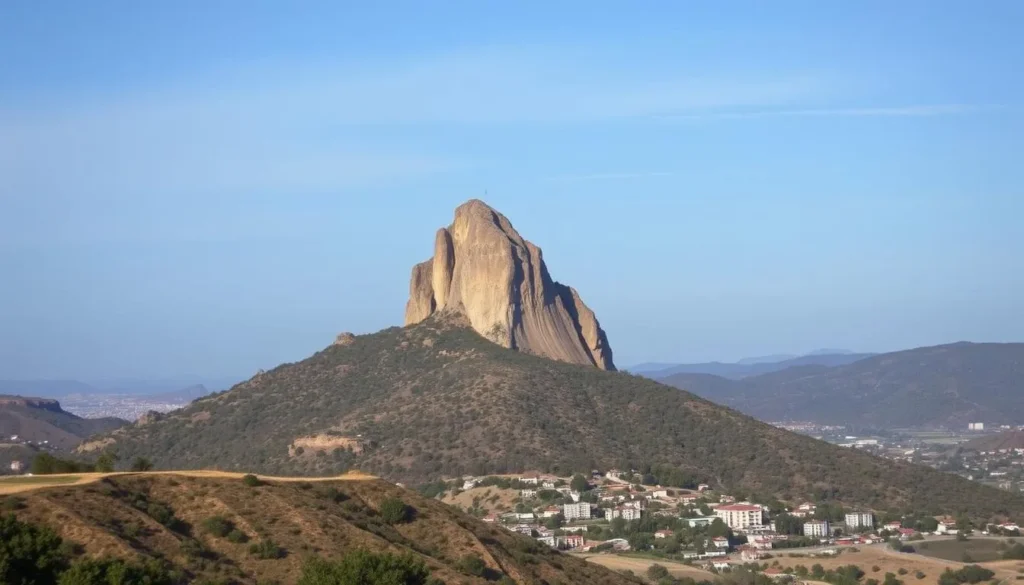
Just an hour’s drive from Queretaro lies the charming town of Bernal, home to the world’s third-largest monolith, Peña de Bernal. This natural wonder is a must-visit attraction for anyone traveling to Queretaro.
Hiking the World’s Third Largest Monolith
Peña de Bernal is a spectacular sight, and to truly experience it, we recommend hiking up the monolith. While proper rock climbing gear is needed to reach the very top, you can still trek about 80% of the way up without it. The steep roundtrip hike takes around two hours, rewarding you with sweeping views of the town, surrounding mountains, and countryside.
For those who want to reach the summit, adventure outfitters can provide the necessary climbing equipment, but arrangements should be made in advance. You can book a Bernal rock climbing tour from Queretaro to make the most of your visit.
Exploring the Pueblo Mágico of Bernal
After hiking Peña de Bernal, explore the charming Pueblo Mágico of Bernal. The town’s colonial architecture and relaxed atmosphere make it an ideal place to unwind. Be sure to try the local specialty, gorditas, at one of the town’s many restaurants.
Plan your visit strategically: weekdays offer more tranquility and space on the trails, while weekends bring a more festive atmosphere but larger crowds.
Other Magical Towns Near Queretaro
Beyond Queretaro’s historic center, you’ll find a trio of enchanting towns that showcase the best of Mexico’s wine, crafts, and natural beauty. These magical towns are perfect for day trips, offering a unique glimpse into the region’s culture and natural landscapes.
Tequisquiapan: Wine and Cheese Town
Tequisquiapan is a charming Pueblo Mágico known for its wine and cheese production. You can visit local vineyards and cheese farms, and enjoy the town’s beautiful central plaza. The town’s relaxed atmosphere makes it an ideal day trip destination.
Amealco: Home of the Muñeca Queretana Dolls
Amealco is famous for being the birthplace of the Muñeca Queretana (Lele dolls), handcrafted by indigenous women. These dolls are considered one of the symbols of Queretaro. Visiting Amealco gives you the opportunity to see these traditional dolls being made and learn about the local culture.
Cadereyta and Its Botanical Garden
Cadereyta’s Regional Botanic Garden is a must-visit, with over 3,000 plants typical of semi-desert climates. The garden features a unique landscape with cacti, yucca forests, and short hiking trails that offer panoramic views. It’s a great place to learn about the arid environment and enjoy nature.
These magical towns near Queretaro offer a complementary experience to visiting Queretaro, providing different perspectives on the region’s culture, crafts, and natural beauty. Consider day trips to Tequisquiapan, Amealco, and Cadereyta to enrich your travel experience.
Outdoor Activities and Natural Areas
Beyond Queretaro’s historic center, you’ll find a range of outdoor activities and natural areas to explore. The city is surrounded by diverse landscapes, offering something for every nature lover and adventure seeker.
Parque Cimatorio National Park
Parque Cimatorio National Park is a hidden gem just a 10-minute drive from Queretaro’s city center. You can hike, run, or mountain bike through its desert landscape dotted with cacti. It’s advisable to plan your visit for the morning hours to avoid the intense midday heat. Don’t forget to bring water, snacks, a hat, and sunscreen, as there’s limited shade.
Sierra Gorda Biosphere Reserve
The Sierra Gorda Biosphere Reserve is a vast protected area with diverse ecosystems, ranging from desert to cloud forests. This reserve is perfect for nature enthusiasts and adventure seekers, offering numerous trails for hiking and opportunities to spot local wildlife. You can also visit Peña de Bernal or Cerro de las Campanas for additional outdoor experiences near Queretaro.
Enjoy panoramic views of Los Arcos aqueduct from Mirador Los Arcos, especially beautiful at sunset or when illuminated at night. These natural areas complement Queretaro’s urban attractions, allowing you to experience both cultural and natural wonders in one trip.
Planning Your Perfect Visit to Queretaro
Your Queretaro adventure begins with planning, and we’re here to guide you through the best times to visit and things to do. To experience the best things Queretaro has to offer, consider visiting during the dry season, from October to March, when you can enjoy pleasant temperatures and clear skies.
Allocate at least 3-5 days for your trip to fully explore Queretaro. Spend 2-3 days discovering the historic center, visiting landmarks like Los Arcos, and enjoying local cuisine. Additional days can be used for a day trip to Peña de Bernal or exploring nearby wineries for a wine cheese tasting experience.
A guided tour can enhance your understanding of Queretaro’s history and culture. Book accommodations in the historic center for easy access to most attractions. Pack comfortably for Queretaro’s semi-desert climate, bringing layers for temperature changes and comfortable shoes for walking.
December is a particularly magical time to visit, with the city beautifully decorated for the Christmas season. Just be sure to pack a jacket for the cooler nights. With this planning, you’ll be set for an unforgettable trip to Queretaro.
